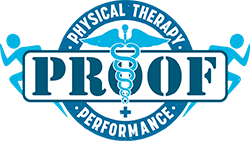Have you always wanted to hike the Grand Canyon but you’ve never been able to, or never wanted to because of knee pain when you hike, especially while hiking downhill? Well, don’t let that hold you back anymore. We want to help you with that knee pain, so let’s talk about why you have knee pain when you’re hiking, what happens, where it comes from, and what you can do to fix it.
What is Happening?
Let’s look at the anatomy first. The thigh muscles (quadriceps) attach right below the patella, or the kneecap. Those muscles actually begin right above the hip, and they come all the way down to below the knee. When you’re hiking and your knee doesn’t stay in a neutral position, what tends to happen is these muscles get stretched in one way or another and they get really irritated. Most often, this is from the knee falling in when you’re using it.
What Can I do About It?
There are a couple of things that you can do to help decrease the amount of irritation that is in the knee while you’re hiking. The first thing is to think about how you’re stepping, how you’re standing, and how you’re walking. The easiest way that you can help with this is find something that you can step up on, like the bottom stair, a curb, or our favorite: pathology books that are super thick. You’re going to step up, keeping in mind the hip, knee, and middle toe alignment, and think about using the muscles in your butt to rotate your knee out. This keeps the thigh muscles working in a straight line like they prefer. What you’re going to do is practice this 15, 20, 30 times a day making sure that that knee stays in line each time.
Next, you’re going to do the second half of the step up exercise because you can’t get to the top of the Grand Canyon without having actually gone down to the bottom first. After the step-up exercise, you’re going to break it down into the second part. You’re going to step down, tapping the foot on the floor without putting your whole weight on the floor. Again, making sure that the hip, knee, and middle toe are in alignment the whole time. As you’re doing this, again engage the butt muscles on the outside, try and rotate the knee out so that you’re nice and stable with the leg. You don’t want to see the hip dropping down, you want to see level hips as you tap down. Those are the first two exercises that can help with knee pain.
The last one is the most basic exercise that a lot of people do when they think about hip or knee pain: clam shells. Lie on your side with your knees bent, stacked on top of one another. Keeping your feet touching, lift your top knee up, without your hip rolling back. When you do this, think of engaging the muscles on the side of your hip. These are the muscles that move the knee in space, and they’re going to be the ones to help you decrease those really bad biomechanics when you’re going up or downhill.
What Next?
Try these exercises for a couple of weeks. The results won’t come super quickly because it’s a strength issue, and you build strength up over time. Still go out and hike, and try practicing this form while doing so and see how it goes. If you start to notice a little bit of difference, even after a few weeks, we’d absolutely love to hear about it. If you’re still struggling because there’s still pain with the step ups and step downs, we’d like to hear about that too because we’d love to get you in the clinic and help you get on that dream vacation where you go hike the canyon without hesitation. We hope to hear from you soon!
-Dr. Jordan


0 Comments